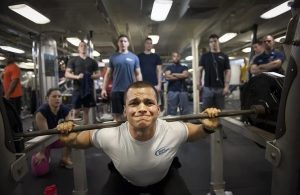
Challenging workouts will help you reach your goals, but demanding exercise everyday can cause injury and burnout.
Now that things are opening up again, many are hitting the gym hard, determined to get back the gains they’ve lost over the last few months. “More is Better” seems to be the mantra, as proven by the masses of exercisers obsessively working out 5 days a week or more. Their resolve is admirable, but it’s a blueprint for defeat. Pushing yourself to exercise hard (or harder than you’re used to) will not only cause near-debilitating soreness but setting a goal of a minimum of exercising 7 days a week with no rest causes burn-out.
The way to optimize your results is by incorporating active rest into your workout regimen. It’s an effective way to exercise every day because it not only helps keep you in the habit of daily workouts, but it also promotes recovery to alleviate soreness while helping build muscle.
You Need Active Rest
The day after an intense workout, you might not feel like getting out of bed, let alone exercising, but that’s just what the doctor ordered. Personal trainer and health and fitness expert Jonathan Ross explains that, unless you’ve done damage and injured yourself, an active rest day will help you get past the discomfort of post-workout pain and get you feeling better faster. Some personal trainers advise clients to take a day off between each workout, but strength and conditioning coach Kyle Arsenault recommends that the days between lifting should be used to perform mobility exercises to correct form and imbalances, and enhance conditioning.
So, What Is It?

Using lighter weights or only doing one set of each exercise are two ways to incorporate active rest into your workout schedule.
Active rest isn’t literally rest, so inserting active rest days in between workouts doesn’t entirely give you a day off. Instead, it’s more like changing things up and taking it a little easier. Stack explains that you can approach active rest in one of three ways
- do your typical workout, but decrease the intensity
- stick with the same intensity but take the volume down a notch (performing only one set of each exercise, for example)
- do something physically active but entirely different from your typical workout
Option number three is a useful choice for people trying to commit to keeping exercise in their schedules because it eliminates the boredom factor that defeats so many. It’s also an effective way to push past a plateau because it is a change of pace that forces your body to do something different–and that’s when you typically see the best progress.
A Recommendation
An increasing interest in improving mobility is trending in health and fitness . Doing so enhances quality of life for people of all ages, and it reduces the chances of injury from any activity including sports, exercise, and even normal everyday actions. Sure, you expect professional athletes to sustain injuries during games, and it’s common for people who work out to strain, pull, or twist something, but how many times have you heard of someone throwing their back out getting out of the car or wrenching their neck when turning around too fast? Because you can hurt yourself doing pretty much anything, it makes sense to perform mobility exercises on your “off” days between workouts.
Fitness expert and former Navy SEAL Stew Smith recommends starting your active rest workout with about 20 minutes of cardio. Use the elliptical or a bike to keep it low-impact. Then work with the foam roller for about 5 minutes before moving on to exercises that are more like dynamic stretches such as walking lunges, bodyweight squats in which you hold at the bottom of the move for a count of 10, hip rotations, wood choppers, halos, and finish up with a few planks, held for 30 seconds each.
Should You Ever Take an Actual Day Off?

According to ACE, getting a massage counts as active rest–that’s my kind of workout!
Sure you should, especially if your body is telling you it needs a rest. If you don’t feel like working out, the American Council on Exercise recommends you analyze why. Are you just being lazy? Are you bored with your workout? Or is your body too fatigued to go on? If it’s the last one, there’s nothing wrong with taking a day to do nothing more physically demanding than making the bed and taking out the trash. To ensure you reach your goals and stick with your fitness regimen, though, make sure there are less of those days and more active rest days for recovery and breaking up the monotony of your challenging workouts.
